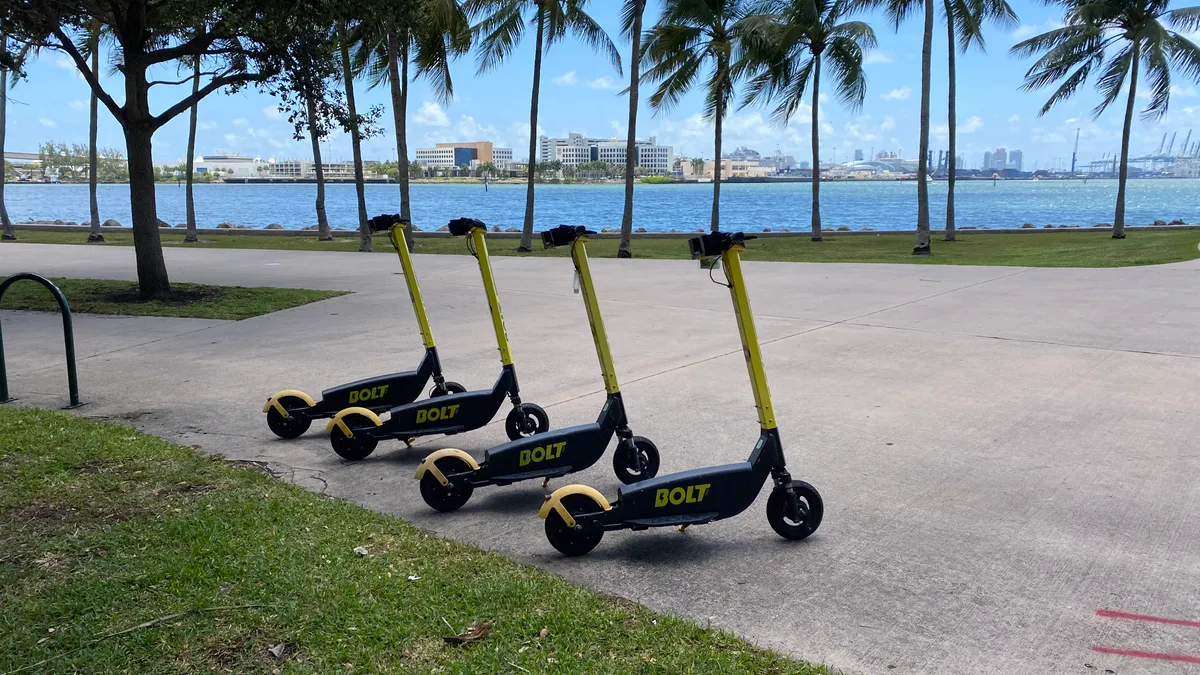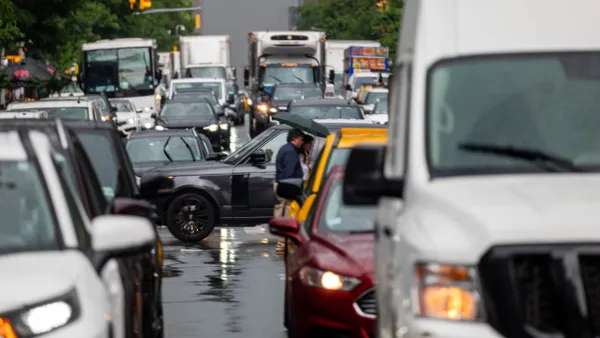Dive Brief:
- Miami will add about three miles of protected bike and scooter lanes on busy downtown corridors as part of a new program partially funded by fees on electric scooters.
- Under a plan approved by the Miami-Dade Board of County Commissioners last week, the city will install concrete barriers along the new lanes and add pedestrian ramps to adjacent sidewalks. All pedestrian crossings in the affected area will also be upgraded to maximize visibility.
- The roughly $2 million upgrades, construction of which has already started, will be partially funded by $1 million from the city of Miami's micromobility fund. The remainder will be paid for with road impact fees.
Dive Insight:
Florida is home to some of the country’s most dangerous cities for pedestrians, according to a Smart Growth America report. Critics have dinged Miami for not following through on a 2009 Bicycle Master Plan intended to "transform Miami into a bicycle friendly city," the vast majority of which has not been built.
The recently approved protected lanes will be installed along three miles of downtown streets, covering areas where there is already significant use of scooters and bikes by residents and visitors.
"This is extremely necessary. Miami drivers are not very safe. I’ve ridden a bike, I’ve ridden a scooter in downtown Miami and I feel unsafe on the roads," said Kevin Amézaga, executive director of the mobility group Miami Riders Alliance. "We acknowledge that in downtown Miami, cars cannot be the way we grow, but we need to give people safe alternatives."
The goal is to eventually build an extensive network of micromobility lanes — including bollards, concrete barriers and painted bike boxes — that would connect large parts of downtown, rather than simply adding lanes to a handful of streets, said Carlos Cruz-Casas, assistant director for mobility in the Miami-Dade County Department of Transportation and Public Works. The "proactive" effort, he said, will help create "a more inclusive transportation network" and also further the county’s Vision Zero goals, which seek to eliminate traffic deaths and serious injuries by 2030.
"While we’re looking back to understand the causes of collisions and crashes, we are also creating the infrastructure to prevent them so that we don’t have to count statistics later on," he said. The department is moving at "a million miles an hour" to revamp the county’s transportation network for safety and sustainability goals, he added.
Miami has seen several changes in micromobility over the past year. The county suspended use of shared vehicles during the COVID-19 pandemic, returning them to city streets in October 2020. The fleets were then suspended for a short period around the beginning of 2021 over concerns about underage riders and sidewalk clutter, the Miami Herald reported. The latter pause led to new regulations about sidewalk clutter and distribution of vehicles throughout downtown, as well as new speed limits.
In the summer of 2020, commissioners debated using the micromobility fees to cover projected budget shortfalls because of the coronavirus pandemic, Miami Today News reported. Micromobility supporters, however, argued the money should remain siloed for revamping the long-overdue bike master plan and ultimately the budget deficit was lower than expected.
As scooters have become more popular and established transportation tools in cities, transportation departments around the country are rethinking their infrastructure plans to build dedicated lanes or paths that can accommodate them. Many cities — like Indianapolis, Atlanta and Santa Monica, California, — have required micromobility operators add fees or pay into infrastructure funds to pay for the new construction.










